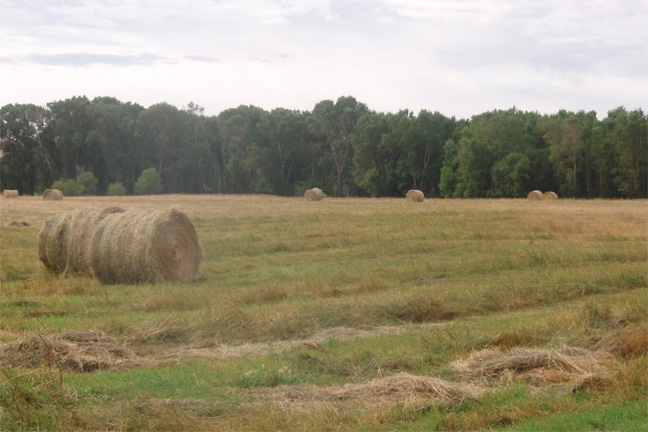
Agricultural News
Peel Recommends Forage Planning to Manage Cost and Enhance Productivity
Mon, 09 Mar 2015 11:28:09 CDT
 Derrell S. Peel, Oklahoma State University Extension Livestock Marketing Specialist, writes in the latest Cow/Calf Corner newsletter.
Derrell S. Peel, Oklahoma State University Extension Livestock Marketing Specialist, writes in the latest Cow/Calf Corner newsletter.
The old saying is "hope for the best but plan for the worst". When it comes to forage considerations for cow-calf producers I believe there is a need to plan for the worst-and plan for the best. And it's not too early to begin forage planning for 2015. There are several reasons to plan now for the coming growing season including; opportunities to manage forage costs; opportunities to enhance forage productivity and total forage production in 2015; and opportunities to invest in long-term forage productivity. Blanket recommendations are not possible because of widely diverse geo-climatic regions and variability of individual situations within and across production environments. Oklahoma includes tremendous diversity in production environments that are representative of much of the country including native range and introduced pastures; warm and cool season forages; elevations from less than 300 feet to nearly 5000 feet; and precipitation from less than 15 inches to over 50 inches. Forage planning has value in every environment and every situation.
The continuing drought threat makes planning for the worst imperative. It is important to know the current health and situation of pastures. Some areas have been in persistent drought for four or more years and forage is weakened and needs time to recover. Realistic assessment of carrying capacity is critical even if average or better precipitation occurs this spring. In other cases drought conditions improved significantly last year only to regress this winter and threaten spring forage growth. Good hay stocks were reported going into the winter and many producers will have hay available to provide some flexibility this spring in the event of drought delayed or reduced forage production. It is important now to assess how much flexibility (time) will be available and determine decision triggers that will indicate when adjustments must be made in animal numbers. Should it become necessary: what animals will be sold? when? where? and how?
Planning now can reduce forage costs and enhance forage productivity in the event of average or better forage conditions. Grazing is almost always cheaper than hay and the quantity and quality of grazed forage as well as the length of the grazing season can be enhanced with careful planning regarding the timing, duration and stocking density of pastures. Fertilizer management of introduced pastures can be used to increase total production and stockpile late summer forage growth for extended grazing in the fall. Now is a good time to plan for how much hay is needed-not just how much can be produced. Hay is best used only when grazing is not possible and not as a substitute for grazing. Sometimes it seems that more hay production (and feeding) is used to justify owning haying equipment which is certainly a case of the tail wagging the dog-and expensive too! Cow-calf producers are expected to continue enjoying near record cattle revenues for some time to come but profit maximization still means that cost management is important. Good forage management is essential to optimize cattle production and take best advantage of today's cattle markets.
Strong cow-calf returns provide an opportunity to make some strategic investments in the long-term productivity of forage resources. For example, millions of acres of pasture in Oklahoma are infested with eastern red cedar leading to ever diminishing forage production; increased fire danger; and health problems such as allergies. There are many other invasive species that pose long-term threats to forage production and result in growing costs and loss of productivity. Now might be a good time to consider investing in strategic control of invasive species and implement a long-term management plan to control these pests. At the risk of getting a bit personal, I suggest that some extra expenses on cedar control or other strategic investments may be more valuable to the ranch than a new pickup as a way to reduce taxes this year.
WebReadyTM Powered by WireReady® NSI
Top Agricultural News
More Headlines...




















